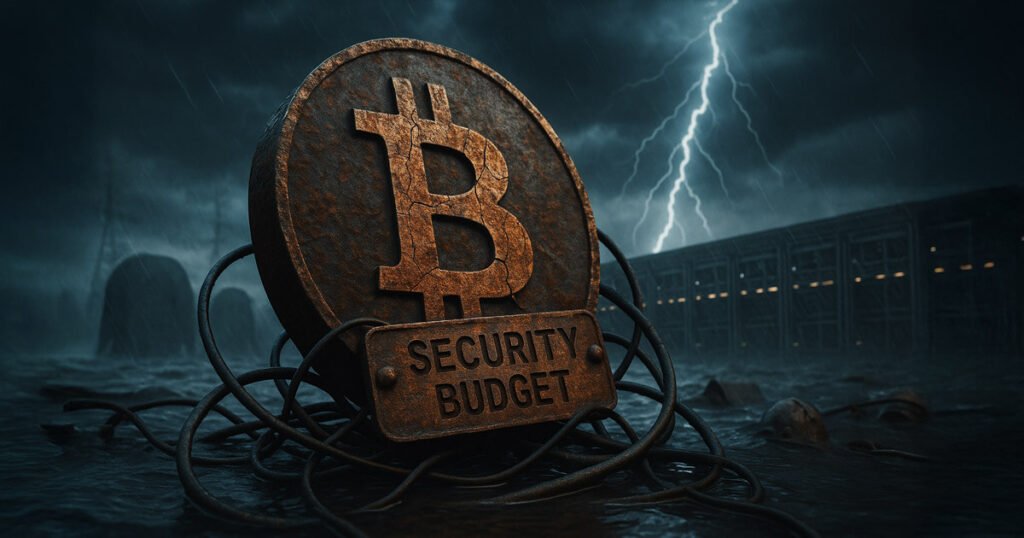Bitcoin’s Security Crisis: What Justin Drake Warns Us About
In recent discussions about the future of cryptocurrencies, Justin Drake, a researcher at the Ethereum Foundation, has raised significant concerns regarding Bitcoin’s long-term security. His analysis, published on May 29, indicates that Bitcoin’s low transaction fees might be putting the entire network in jeopardy, particularly in terms of vulnerability to potential 51% attacks. This risk arises when a single entity gains majority control of the blockchain’s computing power, compromising the integrity of the network. With transaction fees now making up a mere 1% of total miner revenue, a troubling pattern emerges that could have dire implications for Bitcoin’s future.
Declining Fees and Their Consequences
Drake’s observations delve into the intricate relationship between Bitcoin’s halving events and its fee structure. While the halving schedule, which reduces block rewards approximately every four years, has taken place multiple times over the last eight years, the corresponding rise in transaction fees has not materialized. In fact, fees are hovering at around a 13-year low, with an average of just 6.5 BTC per day. This decline represents a stark contrast to earlier periods when transaction fees were a more substantial part of miners’ revenue. As Drake notes, a stable fee structure is crucial for maintaining the health and security of the Bitcoin network, and the current situation raises alarms about the ongoing viability of Bitcoin’s security model.
The Crumbling Security Model
Drake’s claim that "Bitcoin’s security model is broken" resonates deeply with the ongoing conversations in the crypto community. If Bitcoin does face a takeover, he argues, the repercussions could extend beyond Bitcoin itself, potentially destabilizing the entire crypto ecosystem. He challenges the assumption that transaction fees will eventually rise to replace block rewards, stating that this isn’t happening; the fees are diminishing instead. He warns that if miners were forced to rely solely on these fees, their revenue could drop dramatically, leading to a significant decrease in Bitcoin’s hash power—reducing it to just 1% of its current strength. This worrying trajectory raises questions about the sustainability of Bitcoin as a secure digital asset.
The Illusion of Price Increase
Additionally, Drake dismisses the notion that rising Bitcoin prices could mitigate these security concerns. Even in a hypothetical scenario where Bitcoin’s price reaches $1 million per coin, he claims it would still only cover a fraction—10%—of today’s security requirements if fees remain stagnant. For context, he compares Bitcoin’s current security to a vast number of space heaters, showcasing that even a drastic cut in miner revenue would radically reduce the network’s security backbone. He emphasizes that it’s untenable for such a high-value asset to be secured by an inadequate energy supply, referencing the stark realities of energy production in places like Texas.
Proposed Solutions and Challenges
Recognizing these alarming issues, Drake proposes several potential solutions to revitalize Bitcoin’s security framework. He suggests that revising the fee market or even introducing "tail issuance"—lifting Bitcoin’s 21 million coin supply cap—could provide ongoing incentives for miners. Moreover, he puts forward the idea of transitioning to a Proof-of-Stake (PoS) model, which Ethereum has successfully employed. However, he acknowledges that these suggestions are likely to face significant resistance within the traditional Bitcoin community, which remains staunchly committed to its current principles and ideologies.
The Unaddressed Elephant in the Room
Drake points out that while some within the Bitcoin community have suggested vague alternatives like Proof-of-Authority through mining pools, such proposals lack the necessary detail and practical implementation strategies to be seriously considered. He argues that the community is not addressing the most pressing issues facing Bitcoin’s structural stability. By burying their heads in the sand, he warns that the fundamental problems will only grow louder, threatening the integrity of what is meant to be an antifragile network.
Conclusion: A Call for Action
In summary, Justin Drake’s analysis brings to light critical vulnerabilities in Bitcoin’s current model that warrant immediate attention. The intersection of declining transaction fees, unsustainable miner revenues, and potential 51% attacks raises serious questions about Bitcoin’s future security. As the crypto landscape evolves, it is essential for the community to engage in constructive dialogue about how to enhance Bitcoin’s security structure. Whether through revising the fee market, exploring new issuance models, or considering alternative consensus mechanisms, the time has come for Bitcoin to adapt to the challenges it faces. The future of this cornerstone of cryptocurrencies may depend on it.


